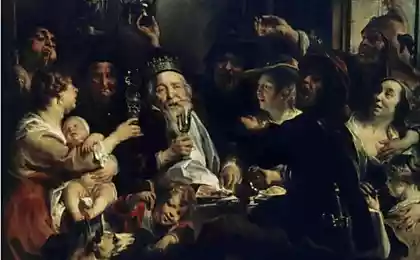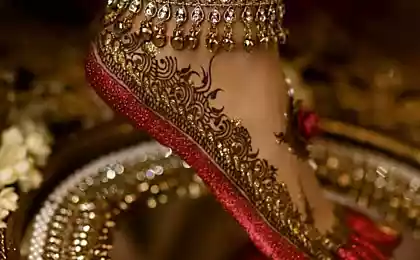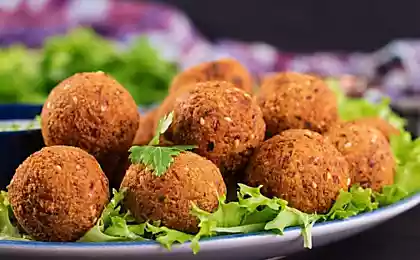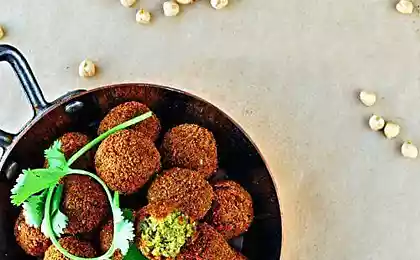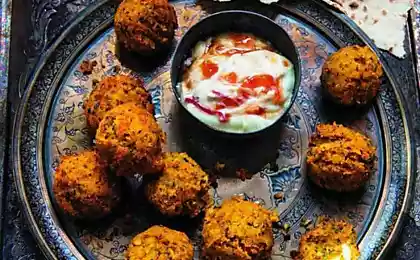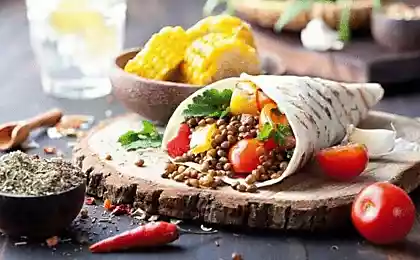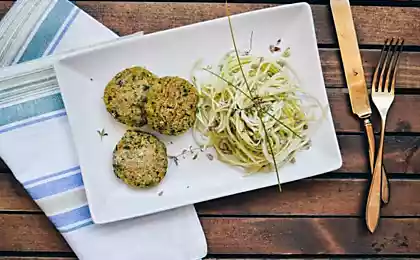439
Pythagoras hated beans
Thirty eight million seven hundred ninety nine thousand six hundred eighty three
In the middle Ages daily diet differed significantly from the modern one. It is clear that there was neither semi-finished products or factory products, nor, especially, supermarkets where you could buy, and then long to lament the "lack of naturalness" of the modern diet. In those early years were pleased that the food could grow. Nevertheless, some of the gifts of nature reputation was unimportant. For example, beans. Nowadays legumes are already used in the production of artificial meat.
Thirty four million three hundred eighty five thousand eight hundred fifty nine
Excellent book Melitta Weiss Adamson, "Food in Medieval Times" ("Food in the middle Ages") in a popular form gives some idea about how to eat medieval people and, most importantly, think about your everyday food.
If today it has become fashionable to be afraid of "chemical and synthetic" products, in the Middle ages around completely natural plants and their fruits, too, developed its own mythology. Therefore, nutritional myths appeared long before the first nutritionist. And sometimes they are based even lay a grain of truth.
Of course, to use natural remedies for medicinal purposes should be with great caution and after consultation with your doctor, since many natural products have a fairly pronounced side effects.
Babyfashion grown only in modern times, so the medieval man had to settle for the wild horse and Fava beans, which were common in Europe, Northern Africa and Western Asia. Eating beans have caused the accumulation of gastric gas (bloating), and some people have developed the disease of premarinbuy anemia (favismo), so the opinion on the beans was not the best.
In Antiquity they were associated with death and the underworld, spirits of death, decomposition and filth, but also with sex and rebirth, the eating of meat and even cannibalism.
Pythagoras and his followers were warned against eating of meat and beans. In the Medieval culture to the beans were treated without much prejudice, but nevertheless they are not liked and considered a food of the poor. Fresh and dried beans were used primarily by poor people and monks in cooking. They also ate during lent. In lean years they were made of flour and baked bread.
But representatives of European high society ate beans often, at least in the early middle Ages. Doctors recommend beans as a treatment for various ailments, but often warned of their food because the beans were considered cause dizziness, confusion, malaise and bad mood.
Gorobchuk and beans, peas grown in Europe for thousands of years. It was prepared fresh (green) or dried. He was a source of proteins and especially prized long winters with short solar day. Because it is relatively easy to prepare for the winter, Samusev.
Although pea is a legume, too, he, unlike beans, are not considered food of the poor. Very popular was pea soup and a dish of peas with bacon and peas with eggs. This mixture is fried and even baked. In addition, pea was the replacement of meat in the posts. Medieval medicine in General treated peas approvingly, believing it to be highly digestible the food product.
Chickpeas (garbanzo beans, garbanzo beans)And this legume was common in the Levant (the Eastern Mediterranean) and Ancient Egypt. In the Middle ages it became very popular in the Mediterranean. Chickpeas have played an important role in Arab cuisine, the cuisines of Spain, southern France, Italy, and Sicily. These European cultures have experienced a significant impact of Arab civilization. As beans, chickpeas cause flatulence, while increasing spermatogenesis, and stimulates menstruation. It is a diuretic. Medieval doctors recommended it to combat kidney stones and urinary bladder.
Fifty seven million five hundred eighty nine thousand six hundred eighty two
Apparently, around the popular and inexpensive products at all times lined up a whole mythology. Nowadays, this fate befell the potatoes and corn.
Source: hi-news.ru
In the middle Ages daily diet differed significantly from the modern one. It is clear that there was neither semi-finished products or factory products, nor, especially, supermarkets where you could buy, and then long to lament the "lack of naturalness" of the modern diet. In those early years were pleased that the food could grow. Nevertheless, some of the gifts of nature reputation was unimportant. For example, beans. Nowadays legumes are already used in the production of artificial meat.
Thirty four million three hundred eighty five thousand eight hundred fifty nine
Excellent book Melitta Weiss Adamson, "Food in Medieval Times" ("Food in the middle Ages") in a popular form gives some idea about how to eat medieval people and, most importantly, think about your everyday food.
If today it has become fashionable to be afraid of "chemical and synthetic" products, in the Middle ages around completely natural plants and their fruits, too, developed its own mythology. Therefore, nutritional myths appeared long before the first nutritionist. And sometimes they are based even lay a grain of truth.
Of course, to use natural remedies for medicinal purposes should be with great caution and after consultation with your doctor, since many natural products have a fairly pronounced side effects.
Babyfashion grown only in modern times, so the medieval man had to settle for the wild horse and Fava beans, which were common in Europe, Northern Africa and Western Asia. Eating beans have caused the accumulation of gastric gas (bloating), and some people have developed the disease of premarinbuy anemia (favismo), so the opinion on the beans was not the best.
In Antiquity they were associated with death and the underworld, spirits of death, decomposition and filth, but also with sex and rebirth, the eating of meat and even cannibalism.
Pythagoras and his followers were warned against eating of meat and beans. In the Medieval culture to the beans were treated without much prejudice, but nevertheless they are not liked and considered a food of the poor. Fresh and dried beans were used primarily by poor people and monks in cooking. They also ate during lent. In lean years they were made of flour and baked bread.
But representatives of European high society ate beans often, at least in the early middle Ages. Doctors recommend beans as a treatment for various ailments, but often warned of their food because the beans were considered cause dizziness, confusion, malaise and bad mood.
Gorobchuk and beans, peas grown in Europe for thousands of years. It was prepared fresh (green) or dried. He was a source of proteins and especially prized long winters with short solar day. Because it is relatively easy to prepare for the winter, Samusev.
Although pea is a legume, too, he, unlike beans, are not considered food of the poor. Very popular was pea soup and a dish of peas with bacon and peas with eggs. This mixture is fried and even baked. In addition, pea was the replacement of meat in the posts. Medieval medicine in General treated peas approvingly, believing it to be highly digestible the food product.
Chickpeas (garbanzo beans, garbanzo beans)And this legume was common in the Levant (the Eastern Mediterranean) and Ancient Egypt. In the Middle ages it became very popular in the Mediterranean. Chickpeas have played an important role in Arab cuisine, the cuisines of Spain, southern France, Italy, and Sicily. These European cultures have experienced a significant impact of Arab civilization. As beans, chickpeas cause flatulence, while increasing spermatogenesis, and stimulates menstruation. It is a diuretic. Medieval doctors recommended it to combat kidney stones and urinary bladder.
Fifty seven million five hundred eighty nine thousand six hundred eighty two
Apparently, around the popular and inexpensive products at all times lined up a whole mythology. Nowadays, this fate befell the potatoes and corn.
Source: hi-news.ru
The decomposition of various household waste - clearly
Recipes for cooking soda baths for weight loss


